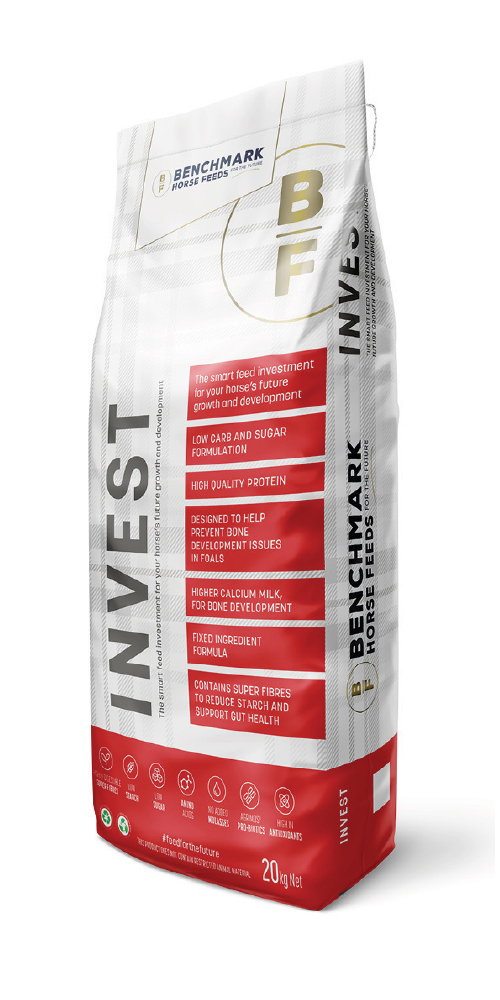Benchmark Horse Feeds are Changing the Game
Until the launch of Benchmark Feeds in 2020 there had been little innovation to reduce the starch loading insteam extruded and pelleted horse feeds in Australia. Over many years Australian horse feed manufacturershave been a significant consumer of mill run or mill mix, a high starch by-product of the flour milling industry. Whilemany will argue that the inclusion of this material has nutritional merit, the main factor for its inclusion isundoubtedly its low cost.
As a rule of thumb, the higher the inclusion rate of mill run in a horse feed, the lower the price of the product. Manyhorse feeds labelled as “cool feeds” contain a high percentage of mill run and are therefore high in starch. Forhorses who are sensitive to grain starch they are far from “cool”.
Because of its complexity, a feed mill is a slow-moving beast. It can be difficult and expensive to make changes toproducts or to bring new raw materials into a feedmill. Each raw material must be received, stored in silos, andconveyed around the mill before being incorporated into a feed. Many mills do not have the capacity to do thiswithout replacing another raw material or committing to considerable capital investment.
While existing products can have their ingredients tweaked any real change demands that new products aredeveloped. This not only adds complexity in the feedmill but for those feed companies who already have a bloatedrange of feeds on offer it simply means that sales are likely to be cannibalised within their range. If there is little orno prospect of increased sales, there is little appetite for real change.
Over the past few years, the educated horse owner has increasingly demanded feeds that are less reliant ongrain starch and are more in tune with a horse’s natural digestive processes. Horses are fibre fermenters andnaturally derive their energy from the production of Volatile Fatty Acids (VFAs) in the hindgut (Microbiome). Thesefats provide energy for all bodily functions. There is no disputing the role of starch in an equine diet. It plays a vitalrole in high-intensity activities such as racing or polo cross where fast release energy is required, but likeeverything, it must be provided in the right balance and the feed must be fit for purpose.
Breeding feeds for example require the inclusion of grains to support the development of the foal in utero,particularly in the final trimester. This said, research has shown that high levels of sugars are one of the maincauses of leg issues in foals. When fed in high concentrations to the mares, foals are more likely to experiencelong-term health issues. Giving foals and weanlings access to high starch/high sugar feeds can have adetrimental effect on bone and joint health.
GETTING THE BALANCE RIGHT IS PARAMOUNT.
Benchmark’s fully steam extruded feed Invest® is new and innovative.
By using highly fermentable soy hulls as the hero ingredient Invest® stimulates theproduction of Volatile Fatty Acids in the hindgut and minimises the fluctuations in bloodsugar associated with high starch feeds. While extruded barley contributes to theenergy profile the starch level remains a low 11.2%.
Importantly Invest® has a nutrient-dense specification and a balanced amino acidprofile to support balanced bone and muscle development in youngstock.
You can access more information about our Benchmark Horse Feeds on our website www.benchmarkfeeds.com.au
#feedforthefuture

